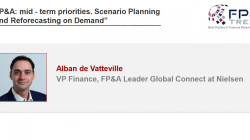In this article, we explore practical steps, enablers, and risks of FP&A centralisation, from vision-setting and change management to technology, data, and talent.
In this article, the author describes how to better understand the increasing importance of relationships with non-financial stakeholders and use this knowledge to create value. He also discusses broader stakeholder management, referring to all parties that can be affected, including clients, suppliers, employees, communities, and the planet.
In this article, we will explore the indispensable role FP&A professionals play in modelling and simulating not only Profit and Loss (P&L) scenarios but also working capital and cash generation scenarios.
FP&A and finance need to have a set of scenarios to support the decision-making process. This is especially important in the fast-changing and evolving environment.
An Enterprise Risk Management (ERM) framework takes into account both risk management as well as internal controls. This article explores why a good understanding of Risk & Control is important for Business Finance / FP&A.
This pandemic has uncovered several shortcomings in our way of planning, managing, and organizing societies and businesses. Now that the future looks predictably uncertain, there is a dire need to understand, react to, and learn from it and other unexpected events.
Pagination
Subscribe to
FP&A Trends Digest

We will regularly update you on the latest trends and developments in FP&A. Take the opportunity to have articles written by finance thought leaders delivered directly to your inbox; watch compelling webinars; connect with like-minded professionals; and become a part of our global community.






